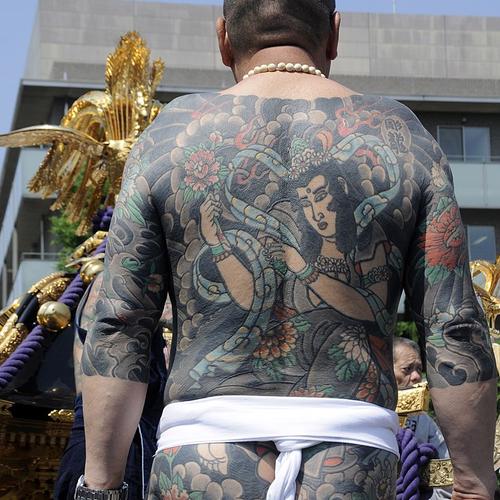Yakuza Tattoos
Posted on April 25, 2023 • 3 min read • 592 wordsYakuza tattoos Popular in Japan

Yakuza Tattoos - Exact Facts
- Yakuza tattoos are usually full-body tattoos, covering the entire back, arms, and chest.
- These tattoos are highly symbolic, with each element representing different meanings, such as loyalty, strength, and perseverance.
- Yakuza tattoos are typically hand-poked, which means that the ink is inserted into the skin using traditional Japanese techniques and tools.
Yakuza tattoos
Yakuza tattoos have been a popular trend in Japan for years. These tattoos, also known as irezumi, are often seen as a symbol of membership in the yakuza, a Japanese criminal organization. Despite their criminal associations, yakuza tattoos have gained popularity in Japan and abroad as a fashion statement. However, the trend has sparked controversy with the Japanese government cracking down on yakuza tattoos as part of its efforts to eradicate the criminal organization. In 2012, a Tokyo governor banned all tattoos in public swimming pools and baths, citing their association with the yakuza. This move was criticized for being discriminatory against tattoo wearers who did not have any connections to the yakuza. Nevertheless, yakuza tattoos continue to be stigmatized in Japan.
Even those who acquire them for non-criminal reasons, such as their cultural or aesthetic value, risk being ostracized from society. This has led many tattoo artists to avoid tattooing yakuza designs or removing them entirely. Despite this, the popularity of yakuza tattoos has not waned, especially among young Japanese people. The intricate designs and symbolism behind the tattoos have a timeless appeal that transcends their criminal connotations. Some wearers of yakuza tattoos argue that by getting these tattoos, they are paying homage to Japan’s rich cultural heritage. In conclusion, while the yakuza tattoos have controversial associations with organized crime, their enduring popularity in Japan speaks volumes about their cultural and aesthetic value. As society continues to evolve, it is imperative that we learn to appreciate the complex meanings behind these tattoos and recognize the diversity of perspectives that shape our understanding of them.. .
Yakuza Tattoos - Gallery
Enjoy these insightful videos on Yakuza tattoos
Horiyoshi III, given name Yoshihito Nakano, is one of the world’s most legendary full-body-tattoo artists.The controversial history of …
Tebori describes the hand-carven technique of Japanese tattooing. It’s a traditional method that dates back to the 17th century, but …



